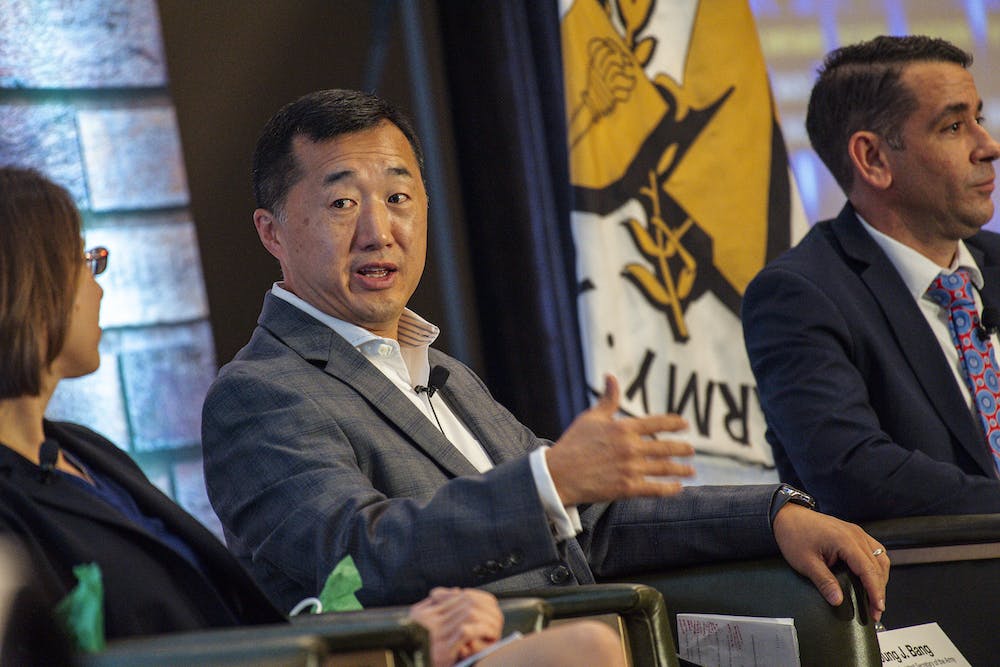Spacecom Aims for Space Defense Readiness by 2027
Space Command’s Gen. Stephen Whiting looks to strengthen partnerships as space sphere threats evolve among adversaries.

U.S. Space Command is bolstering international and commercial partnerships to maximize combat readiness and address proliferating threats posed by China, Russia, North Korea and Iran, Spacecom Commander Gen. Stephen Whiting said this month.
“China is moving at breathtaking speed, they’ve moved to field counterspace capabilities very quickly,” Whiting said during a Schriever Spacepower Series webinar. “We are all concerned about the rate at which China is developing in space, and we want to make sure that we’re working as well to gain together because we do believe we’re all stronger together.”
At a Senate Armed Services Committee hearing in February, Whiting cautioned that the U.S. is facing a “window of vulnerability” to counter adversaries and designated China and Russia as key concerns impacting the combatant command’s efforts.
In response to the growing sense of cooperation in the space sphere among China, North Korea, Iran and Russia, Whiting highlighted that the U.S. defense enterprise’s system of alliances is a unique component, bringing distinctive perspectives and delivering capabilities.
With 33 different international agreements for space situational awareness and an amplifying commercial sector, partnerships are critical to enhancing the U.S. competitive edge and defend current constellations against threats, added Whiting.
“Our [alliance] system makes us stronger and helps us develop resilience and build capacity,” Whiting said. “We can bilaterally share information and then develop tactics, techniques and procedures together.”
According to Whiting, Spacecom’s paramount priority is to make provisions to optimize combat readiness by 2027. He noted that leveraging tests, operations and exercises with partners is critical to operating more effectively.
In January, China had 359 intelligence, surveillance and reconnaissance satellites in orbit, three times the number in 2018. As a result, the command is shifting its strategic mission to conduct dynamic, partnered and integrated space operations to defer aggression and fortify posture.
Whiting also called attention to the significance of his first international trip to South Korea and Japan, emphasizing that collaboration is critical to strengthening initiatives and leveraging expertise to defend threats.
“As countries like China and Russia have made their terrestrial forces more lethal, more precise and more far ranging because they’ve gone to space — we must help our joint force to be protected against those space enabled capabilities,” Whiting said.
This is a carousel with manually rotating slides. Use Next and Previous buttons to navigate or jump to a slide with the slide dots
-

CMMC Needs to Adapt to Evolving Cyber Threats
Katie Arrington says DOD needs to strengthen dynamic cybersecurity in the age of AI and quantum.
13m listen -

Tracking CIOs in Trump's Second Term
Stay informed on the latest shifts in federal technology leadership as new CIOs are appointed and President Trump's second term takes shape.
6m read -

Harnessing AI for Data-Driven Resilience
Federal and industry leaders are modernizing data to ensure AI outputs are reliable and able to support resiliency efforts as threats continue to rise.
20m read -

DOD Prioritizes Data Agility with Risk-Based Shift, SWFT Program
DOD faces growing pressure to overcome legacy barriers and adopt agile, risk-based strategies exemplified in DOD’s new SWFT program.
4m read








